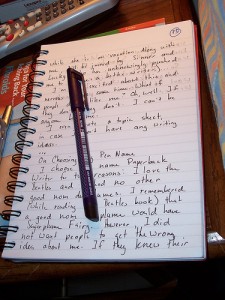It is not enough to realize that you need to prepare and gather certain items you also need to know why you need to do certain things. Knowing why something is important allows you to make contingency plans. If you do not know how to use certain things or even know what they are used for, means you will not be able to find a substitute for that item.
Survival is about adapting and using what tools and materials may be available. You need to practice, and test items and plans. You are never going to be prepared unless you know that your plans, tools and equipment actually work.
Practice
Emergency plans like anything else must be adapted as the situation changes. If you have an emergency escape plan from your home, it should be tested under various conditions such as in cold weather if applicable, during a thunderstorm/snowstorm and at night. You have to keep in mind it is not likely that you will need to escape your home unless there is an ongoing disaster, so your training must be as realistic as possible. Adapt the plans as the weather changes and plan for certain disaster to create structural damage that must be accounted for. What happens if a large tree blocks one of the escape routes out of the house?
Training is gathering information to use during a real life crisis. You cannot train for a few days and declare yourself trained. Training should be a constant so it brings you to the point where actions become natural and instinctive. Practice is important for retention of information as well. You gather the knowledge and then apply that knowledge during your training sessions and then in real life situations. Have practice runs every 60 days.
Equipment Materials and Supplies
Too often families and individuals will stockpile supplies and then become complacent when nothing happens. Soon the emergency supplies are being used for backyard adventures or weekend camping trips and some items may deteriorate from improper storage and items may have gone past their use by date.
Inventory your supplies every 90 days and make on an index card for each item or batch of items. Information on the card should include who checked for expiration dates the date of inventory, when to inventory again and how much is on hand and amount you want to have on hand. Attach the card to the outside of any backpacks, storage bins or shelves.
Item Identification and Usage
You may know how to use everything but does everyone else. You can be hurt during the crisis, and if you are the only one that knows how to purify water, or make a water filter or any number of things then your family or group will suffer. Does everyone know where the main gas meter is and how to shut off the gas service for example?
As a leader, you need to train others to take over for you if something happens to you. It is not a plan if only one person knows, it is a secret, so you must not keep things to yourself, make sure everyone has the same level of knowledge as you. Of course, not everyone will achieve the same level of training, but everyone must enough knowledge to carry on and keep the family alive. Test for knowledge on how to use all of the equipment and tools every 90 days or when a new item is obtained. Use a training sheet that indicates everyone is proficient with each item and identify members that may require further training.
Keeping Track of Progress
Every member of the family should have their own logbook. The book should have important numbers, rendezvous points and school and work emergency plans. Older children should know where all emergency shelters are located in your community and must know how to get there under any conditions. You need to know where schools will take children during a crisis so you do not waste time searching frantically. You must have a plan for getting home from work during a crisis.
Everyone in the family should have a 24-hour bug out bag in their car or at work.
• You will need communication devices that do not rely on cellular towers or the power grid
• Food and water for 24 hours and a thermal blanket along with a multi-tool and knife, these items will be needed if you have to walk from work to home
• Walking/hiking shoes, gloves, bandana, hat and cold weather coat if applicable
• Rain Poncho
Logbooks should also track training schedules and have an inventory of all your supplies. Remind everyone that the logbooks are confidential you do not want people outside of the family knowing your plans and level of readiness.
Controlled Testing Environments
Unless you have survived through a catastrophic event, you can only imagine what it is like and imagination has a way of blurring the rough edges. You should have training weekends where you shut off the water, electricity and all electronic gadgets to get a feel for what it is like surviving without utilities.
In a controlled environment, you can use mistakes as tool to improve your readiness and no one suffers from those mistakes. You have to know what to do, how to give baths, cook meals, and do all of the needed tasks without using modern conveniences. The entire world is just one disaster away from waking up to 150 years in the past. The things you do during the normal course of a day will still have to be done during a crisis.
Going off grid if you will is the only way to test your preparedness plan. You get to experiment to some extent with alternative power sources such as solar or gas operated generators, better yet portable power stations, fire starting methods and surface water collection and purification and so on down the line.



